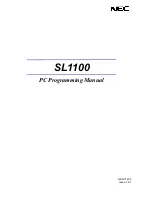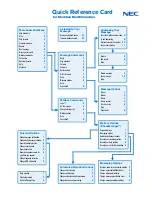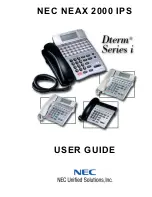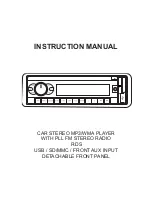
Remote Audio Devices
The primary purpose of a Remote Audio Device (RAD) is to amplify, digitize, and transmit a digital
audio signal via CAT 5 cable to a HAL host device. RADs can also receive a digital signal from the
HAL and then convert it to analog before sending it to its attached audio equipment. RADs are capable
of transmitting and receiving up to four channels of digital audio (two in each direction). To better fit
your needs, however, Rane offers various RAD models. Most RAD models are designed to fit in a stand-
ard U.S. two, three, or four gang switchbox.
The HAL System offers a variety of RAD models, each of which serves a unique purpose. For example, a
RAD1 contains two microphone input channels. When you design an audio system, you choose the
RAD models that are appropriate for your application. You must then provide configuration information
to HAL so that it knows which RAD models to expect on each port and what information to send to
each RAD. For more information, see "Available RAD Models" in the Halogen Help System. You can
also read about the available RAD models on the Rane website.
How the CAT 5 Cabling is Utilized
The CAT 5 cable that connects the RAD to HAL also provides power to the RAD as well as a path for
data communications. Data communications makes it possible to control the RAD’s configuration set-
tings, view status information, and update a RAD’s firmware – all from the host HAL device. The fol-
lowing picture illustrates how the four twisted pairs within the CAT 5 cable are utilized.
l
The orange pair is reserved for data communications between the RAD and HAL. Data com-
munications is needed for such things as sending configuration information from HAL to the
RAD, sending firmware updates from HAL to the RAD, and sending status information from the
RAD to HAL.
NOTE
:
Configuration information for a specific RAD (for example, LED intensity, microphone sen-
sitivity, and RAD and channel names) is stored in the HAL device, not in the RAD. This makes it
easy to swap in a new RAD, if necessary, without losing configuration data.
l
The green and blue pairs carry two channels each of balanced, differential, digital audio. Tx refers
to audio that the RAD sends to the HAL. Rx refers to audio that the RAD receives from HAL.
l
The brown pair provides 24 VDC power and ground for the RAD. This is (obviously) the wire
you should check if it appears a RAD is not receiving power.
NOTE
:
Digital Remotes (discussed on page 20) use only the orange pair (for data communications)
and the brown pair (for power).
CHAPTER 2: Hardware Component Details
15
















































